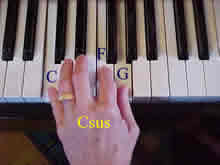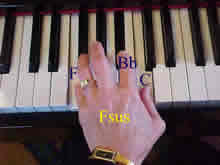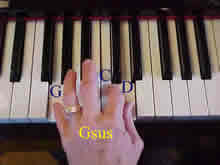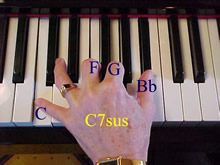Suspensions are chords in which the 4th degree of the scale takes the place of the 3rd degree -- usually temporarily, but not always. For example,
Csus would look like this: |
Fsus would look like this: |
Gsus would look like this: |
Some examples of a 7th chord that was suspended are shown below:
C7sus would look like this: |
F7sus would look like this: 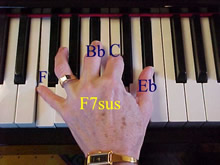 |
G7sus would look like this: 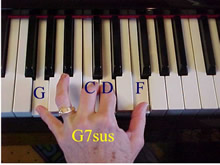 |
It's just that easy. Replace the 3rd of the chord with the 4th, and you've got it! That's all there is to it.
Here's how these same chords look when notated:
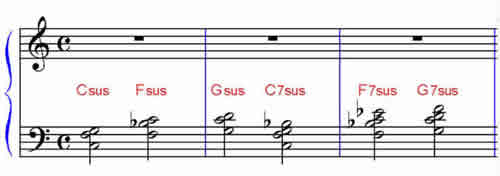
Suspension
A suspension is a non-harmonic tone -- a tone not belonging to the chord -- that often resolves to the harmonic tone. In jazz harmony a suspension usually replaces the 3rd of a major or minor triad with a major 2nd or perfect 4th above the root. The normal resolution of the suspension is to the 3rd of the triad, either major or minor. Suspensions ordinarily appear in leadsheets as any of the following chord symbols:
Csus Csus2 Csus4
When the chord symbol for a suspension is not followed by a number (as in Csus), this generally indicates a sus 4. Occassionally a suspension will be notated as the chord name plus an Arabic number, omitting the sus abbreviation (C4 = Csus4).
Next time we'll investigate altered chords. See you then.
Meanwhile, be sure to review all the previous lessons -- from major triads to 13ths.


